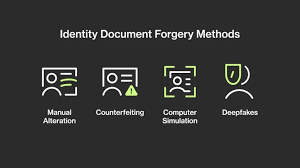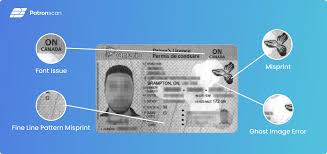Campus identification systems
Introduction
In an era where safety, efficiency, and data management have become paramount, campus identification systems are stepping into the spotlight as a critical component of modern-day educational infrastructure. From small colleges to sprawling university campuses, these systems have revolutionized the way campuses operate, offering a streamlined and secure way to monitor, verify, and track individuals across various facilities. These systems not only enhance physical security but also contribute to operational efficiency by integrating with various campus services. In this extensive exploration, we will analyze the features, market trends, target audience, and benefits of campus identification systems, demonstrating why they are becoming indispensable in the modern academic landscape.
1. What Are Campus Identification Systems?
Campus identification systems refer to the use of digital technologies, such as ID cards, biometrics, and mobile solutions, to authenticate and manage access to facilities, services, and resources on educational campuses. These systems go beyond just security; they create a more organized, efficient, and safe environment for both students and staff.
The scope of these systems includes but is not limited to:
- Access control to dorms, libraries, and buildings
- Attendance tracking for classes and events
- Cashless payments for cafeterias or bookstores
- Identification for health services and medical facilities
- Integration with learning management systems and other campus technology platforms
By utilizing a combination of smart cards, biometric scans, and mobile technology, these systems ensure seamless identification, which enhances campus life in numerous ways.
2. Features of Modern Campus Identification Systems
Modern campus identification systems come equipped with an array of advanced features, which make them highly effective for managing large and diverse campus populations. Below, we detail some of the most prominent features:
2.1 Biometric Integration
Biometric identification has become one of the most trusted forms of security due to its high reliability and accuracy. By using unique human characteristics such as fingerprints, facial recognition, or iris scans, biometric systems ensure that only authorized individuals can access specific areas of the campus. This significantly reduces the risk of unauthorized entry and enhances overall security.
2.2 Smart ID Cards and NFC Technology
Smart cards, which often come with Near Field Communication (NFC) capabilities, have emerged as a popular and user-friendly solution. These cards allow students and staff to tap their cards to enter buildings, pay for services, and check in for classes. Their ease of use and seamless integration with existing campus systems make them a go-to for many institutions.
2.3 Mobile Authentication
With the rapid advancement in mobile technology, many campus identification systems now offer mobile-based solutions, allowing students to use their smartphones as identification tools. Whether through dedicated apps or mobile wallets, this technology reduces the need for physical cards and makes it more convenient for students to manage their credentials.
2.4 Cloud-Based Solutions
A significant trend in modern campus identification systems is the adoption of cloud-based solutions. Cloud technology offers a more scalable and flexible infrastructure for managing vast amounts of data, providing real-time updates, and ensuring secure access from anywhere. Cloud systems also offer better data management, reporting tools, and the potential for integration with other cloud-based campus services.
2.5 Multifunctionality
Today’s identification systems are multifunctional, offering more than just security. They can be used for a variety of tasks, including library checkouts, meal plan tracking, student attendance, and health services management. This integration allows for better organization and offers students a one-stop solution for their campus needs.
2.6 Data Analytics & Reporting
Data is critical for the efficient operation of campuses, and many identification systems now come equipped with powerful data analytics tools. These systems allow administrators to track usage patterns, monitor student attendance, and assess which campus resources are most utilized. This data is crucial for making informed decisions, improving campus operations, and optimizing resource allocation.
3. Market Analysis of Campus Identification Systems
The global market for campus identification systems is witnessing rapid growth due to increasing concerns over campus security, the rise of smart campuses, and technological advancements in identification solutions. According to recent market research, the campus identification system market is expected to grow at a compound annual growth rate (CAGR) of approximately 9% over the next decade.
3.1 Key Market Drivers
Increased Campus Security Requirements:
As the number of campus-related security incidents rises, educational institutions are prioritizing safety. Modern identification systems offer a robust way to enhance campus security by ensuring that only authorized individuals can access critical areas.Demand for Smart Campus Solutions:
With the digital transformation of educational facilities, campuses are moving toward becoming smart campuses. This means that digital technologies, such as campus identification systems, are becoming central to how campuses operate. Integration with smart systems like IoT, cloud computing, and AI further enhances these systems’ utility.Technological Advancements:
The evolution of biometric technology, mobile solutions, and cloud-based systems has made campus identification systems more efficient, reliable, and accessible. The continuous improvement of these technologies is one of the major drivers of market growth.Government Regulations and Policies:
Government mandates and policies regarding campus safety and data security are also boosting the demand for more robust identification systems. In many countries, educational institutions are required to adopt specific security measures to protect students and staff, driving the market for advanced identification systems.
3.2 Key Market Segments
The market for campus identification systems can be segmented by technology, deployment type, and geography:
By Technology:
This includes biometric systems, smart card-based systems, and mobile-based identification systems. Biometric systems are expected to witness significant growth due to their superior security features.By Deployment Type:
Cloud-based systems are gaining traction over traditional on-premise solutions due to their scalability, flexibility, and cost-efficiency.By Geography:
North America and Europe are leading markets due to the presence of numerous large educational institutions and stringent security regulations. However, the Asia-Pacific region is expected to show the fastest growth, driven by increasing investments in educational infrastructure.
4. Target Audience and Adoption Strategies
The success of any campus identification system depends on how well it addresses the needs of its target audience. The primary audience for these systems includes:
4.1 Educational Institutions
Universities, colleges, and K-12 schools form the bulk of the market for campus identification systems. These institutions are concerned about the security of students and staff, operational efficiency, and compliance with government regulations. Offering systems that integrate seamlessly into their existing IT infrastructure, while providing a user-friendly experience, is key to adoption.
4.2 Campus Administrators
Campus administrators are responsible for ensuring the smooth operation of the campus, which includes managing student attendance, access to buildings, and the efficient use of resources. Identification systems that provide real-time data analytics and reporting tools are particularly valuable to this group.
4.3 Students and Staff
Students and staff are the end users of campus identification systems. Their priorities are ease of use, speed, and convenience. They expect systems that allow them to access campus resources, make payments, and navigate the campus seamlessly, without the need for multiple cards or complex processes.
4.4 Security Personnel
For security teams, the most important aspect of a campus identification system is its reliability and accuracy. Security personnel need systems that allow them to easily monitor who is on campus, track access points, and respond to security incidents in real time.
4.5 Parents and Guardians
In K-12 institutions, parents and guardians are also key stakeholders. They want assurance that their children are safe and that the school is taking all necessary precautions. A robust identification system can help provide this peace of mind by ensuring secure access and tracking student attendance.
5. Advantages and Challenges of Campus Identification Systems
While campus identification systems offer numerous benefits, they also come with challenges that institutions must consider when adopting these technologies.
5.1 Advantages
Enhanced Security:
The most significant benefit of campus identification systems is the heightened level of security they provide. By ensuring that only authorized personnel can access buildings and sensitive areas, these systems mitigate the risk of security breaches.Operational Efficiency:
From tracking attendance to managing access to campus services, these systems streamline numerous processes, making campus operations more efficient. They eliminate the need for manual attendance systems, reduce bottlenecks at entry points, and simplify the payment process for campus services.Data-Driven Decision Making:
The analytics capabilities of modern identification systems allow campus administrators to make informed decisions. Whether it’s adjusting access points or optimizing resource allocation, the data provided by these systems can help improve the overall functioning of the campus.Improved User Experience:
For students and staff, campus identification systems provide a convenient, all-in-one solution. Whether through smart cards or mobile apps, users can quickly access the services they need, making their campus experience smoother and more enjoyable.
5.2 Challenges
Cost of Implementation:
The initial cost of setting up a campus identification system can be significant, particularly for smaller institutions with limited budgets. While the long-term benefits often outweigh the costs, upfront investment can be a barrier to adoption.Privacy Concerns:
With the rise of biometric systems and data analytics, privacy concerns have become more prominent. Institutions must ensure that they comply with privacy regulations and implement proper data security measures to protect user information.Integration Issues:
For institutions with existing infrastructure, integrating a new identification system can be challenging. Ensuring that the system works seamlessly with existing security, IT, and operational platforms is crucial for its success.
6. Future Trends in Campus Identification Systems
The future of campus identification systems is likely to be shaped by several emerging technologies and trends:
6.1 Artificial Intelligence (AI) and Machine Learning
AI and machine learning have the potential to further enhance campus identification systems by improving security protocols, predicting access patterns, and offering personalized services to students and staff. AI can also help automate processes such as attendance tracking and resource allocation.
6.2 Blockchain for Data Security
Blockchain technology offers an immutable and decentralized way of storing data, which could be highly beneficial for campus identification systems. By leveraging blockchain, institutions can enhance the security of their data, making it more resistant to hacking or unauthorized access.
6.3 Advanced Biometrics
The use of advanced biometrics, such as behavioral biometrics or multimodal biometric systems (which use a combination of fingerprint, facial recognition, and voice recognition), is expected to grow. These systems offer a higher level of security and accuracy, making them ideal for large campuses.
6.4 Contactless Solutions
The COVID-19 pandemic has accelerated the adoption of contactless solutions, and this trend is likely to continue. Contactless ID cards, mobile authentication, and facial recognition systems allow students and staff to navigate campuses with minimal physical contact, improving both security and hygiene.
Conclusion
Campus identification systems are no longer a luxury but a necessity for modern educational institutions. With their ability to enhance security, streamline operations, and provide data-driven insights, these systems are transforming campuses into safer, more efficient, and more connected environments. As technology continues to evolve, we can expect even more innovative solutions that cater to the ever-growing demands of smart campuses.
Educational institutions must stay ahead of these trends, investing in the right identification technologies to ensure they meet the needs of students, staff, and administrators alike. With the proper system in place, campuses can offer a secure, efficient, and seamless experience for all.
 Educational technology trends
Educational technology trends
 virtual identification
virtual identification
 Fake ID online
Fake ID online
 Fake identification cards
Fake identification cards
 Campus identification systems
Campus identification systems
 High-quality identification ca
High-quality identification ca
 Perfect fake ID benefits
Perfect fake ID benefits

